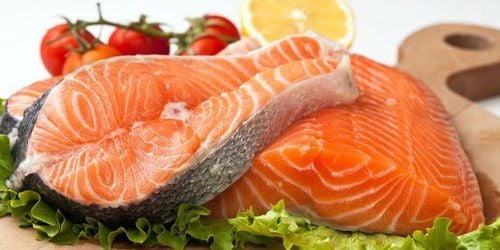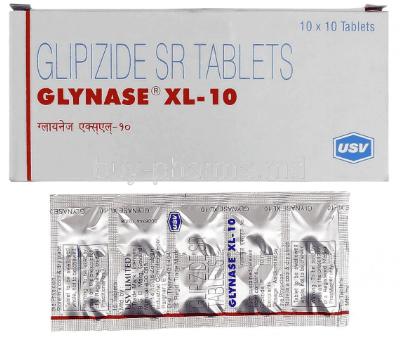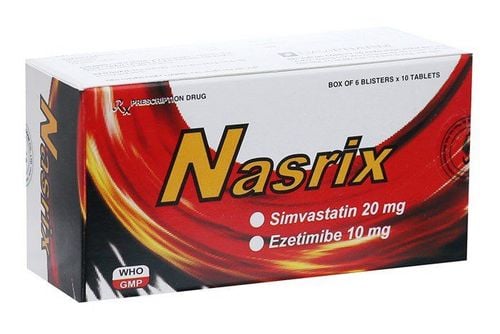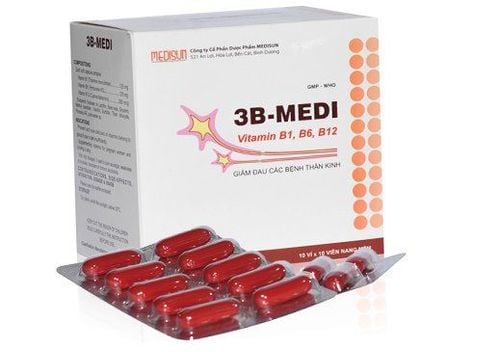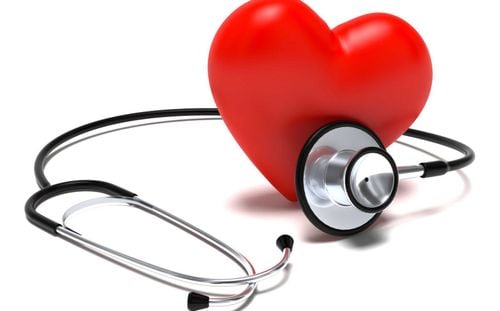This is an automatically translated article.
Red meat, especially processed meat such as sausages, sausages, beef, salted pork... is often used in daily meals, especially breakfast. However, eating too much red meat increases the risk of type 2 diabetes.
1. What is red meat?
Besides distinguishing the meat of livestock such as pork, chicken, beef..., nutritionists have another way to distinguish white meat and red meat. Red meat is meat that contains heme compounds, this is the group of substances that contain the element iron and give meat its bright red color.
Red meat is most commonly found in beef, lamb, veal and pork... sometimes we also see horse or buffalo meat. Inside red meat there are a lot of nutrients such as protein, iron, zinc, vitamin B, carnosine, creatine ... In red meat has different nutritional content depending on what kind of animal it is. Here are the nutrients in 100 grams of fresh beef:
Calories: 176 calories Protein: 20g Fat: 10g Vitamin B3: provides 25% of the Daily Value (RDA) Vitamin B6: 18% of the RDA Vitamin B12: 37% of the RDA Iron: 12% of the RDA Zinc: 32% of the RDA Selenium: 24% of the RDA
2. The uses of red meat you should know
As mentioned above, eating red meat has a lot of nutrients that are beneficial to the health of each person. The following are the benefits that red meat brings and explain why red meat is the choice of many families:
Vitamin B12 supplements for the body: Red meat contains a lot of vitamin B12 and B vitamins. Essential for the healthy development of the body, especially pregnant women, it is very important to supplement this vitamin group for the development of the fetus, to avoid neural tube defects as well as other dangerous diseases. Helps strengthen the immune system: The zinc content in red meat is 11 times higher than that of tuna, which helps to support muscle building, regulate various functions in the body such as endocrine, nutritional metabolism, and promote growth. The development of immune cells strengthens the body's immune barrier and prevents many different diseases. Good for the heart: Red meat is rich in omega 3 fatty acids that are beneficial for heart health, helping to increase good HDL cholesterol, reduce blood pressure, and prevent atherosclerosis. Add protein to the body: Red meat is a rich source of protein for the body. Every 85 grams of red meat will provide you with 1/2 the amount of protein your body needs each day. Protein is an essential substance for the body's vital activities, helping to maintain and develop tissues in the human body.

Thịt đỏ có nhiều công dụng đối với sức khỏe người dùng
3. Eating red meat and risk of type 2 diabetes
Type 2 diabetes is a chronic disease in which the body does not make or use insulin effectively, causing high blood sugar levels, causing many serious effects on the patient's health.Symptoms of type 2 diabetes include blurred vision, persistent fatigue, or feeling hungry, thirsty despite eating a lot, or urinating especially at night, sores on the muscles It takes longer to heal, numbness in the limbs, and unexplained weight loss.
There are many possible causes as well as risk factors for developing type 2 diabetes. In this article we will discuss red meat and the risk of type 2 diabetes.
Although eating red meat has many health benefits, if you eat it incorrectly, red meat has many potential dangers. health risks, especially type 2 diabetes. Red meat is great, but there are two reasons that put it at risk of becoming a health hazard: processed red meat and red meat preparation methods that favor frying or grilling.
Commonly processed red meat such as sausages, bacon... often has preservatives containing nitrate, which is a substance that has the ability to increase insulin resistance. In addition, red meat has a very high amount of iron, when eating too much red meat can increase the amount of iron in the body and have the risk of causing type 2 diabetes.
Some studies have shown that if you consume 100 grams of red meat such as beef in your daily diet, there is a 20% chance of developing type 2 diabetes. Similarly, if you replace processed red meat with only 1/2 the amount, such as 2 slices of bacon or 1 sausage per day, the risk of developing type 2 diabetes increases by more than 50%.
Red meat is very good for health, but on condition that you know how to use them in a reasonable amount. Red meat should not be considered the main dish in our daily meals, but we need to combine the use of other protein sources from milk, eggs, cereals, poultry, fish... In addition to reducing the risk of diabetes Type 2 sugar, you should have a diet that combines more green vegetables, less fat and more scientific exercise.
Once you know the link between red meat and type 2 diabetes, you should pay attention to your diet to ensure the best health. Besides, to effectively treat diabetes, customers can book an appointment through the website of Vinmec International General Hospital to receive effective support from a team of experienced endocrinologists.
Please dial HOTLINE for more information or register for an appointment HERE. Download MyVinmec app to make appointments faster and to manage your bookings easily.




